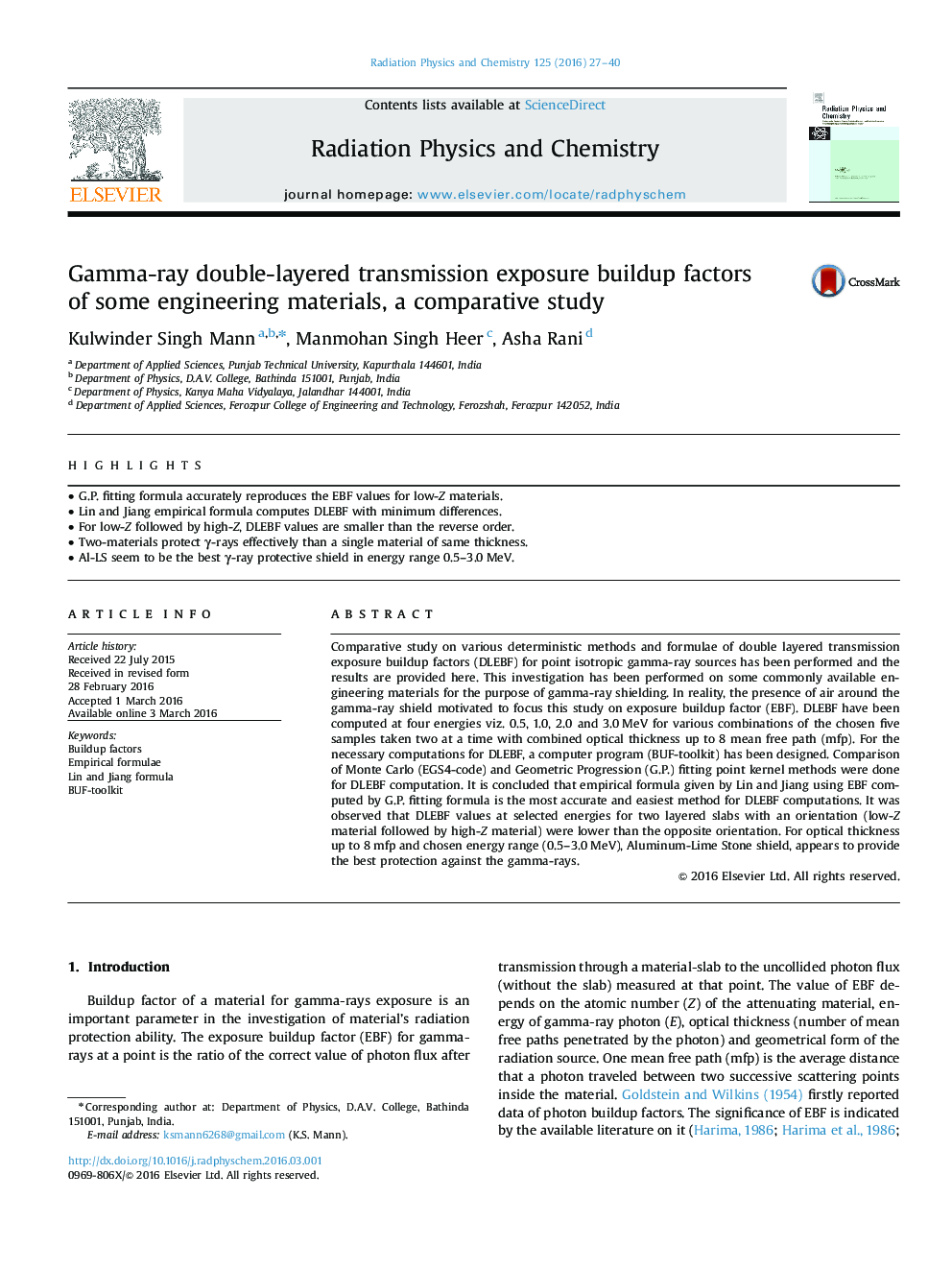| Article ID | Journal | Published Year | Pages | File Type |
|---|---|---|---|---|
| 1885849 | Radiation Physics and Chemistry | 2016 | 14 Pages |
•G.P. fitting formula accurately reproduces the EBF values for low-Z materials.•Lin and Jiang empirical formula computes DLEBF with minimum differences.•For low-Z followed by high-Z, DLEBF values are smaller than the reverse order.•Two-materials protect γ-rays effectively than a single material of same thickness.•Al-LS seem to be the best γ-ray protective shield in energy range 0.5–3.0 MeV.
Comparative study on various deterministic methods and formulae of double layered transmission exposure buildup factors (DLEBF) for point isotropic gamma-ray sources has been performed and the results are provided here. This investigation has been performed on some commonly available engineering materials for the purpose of gamma-ray shielding. In reality, the presence of air around the gamma-ray shield motivated to focus this study on exposure buildup factor (EBF). DLEBF have been computed at four energies viz. 0.5, 1.0, 2.0 and 3.0 MeV for various combinations of the chosen five samples taken two at a time with combined optical thickness up to 8 mean free path (mfp). For the necessary computations for DLEBF, a computer program (BUF-toolkit) has been designed. Comparison of Monte Carlo (EGS4-code) and Geometric Progression (G.P.) fitting point kernel methods were done for DLEBF computation. It is concluded that empirical formula given by Lin and Jiang using EBF computed by G.P. fitting formula is the most accurate and easiest method for DLEBF computations. It was observed that DLEBF values at selected energies for two layered slabs with an orientation (low-Z material followed by high-Z material) were lower than the opposite orientation. For optical thickness up to 8 mfp and chosen energy range (0.5–3.0 MeV), Aluminum-Lime Stone shield, appears to provide the best protection against the gamma-rays.
